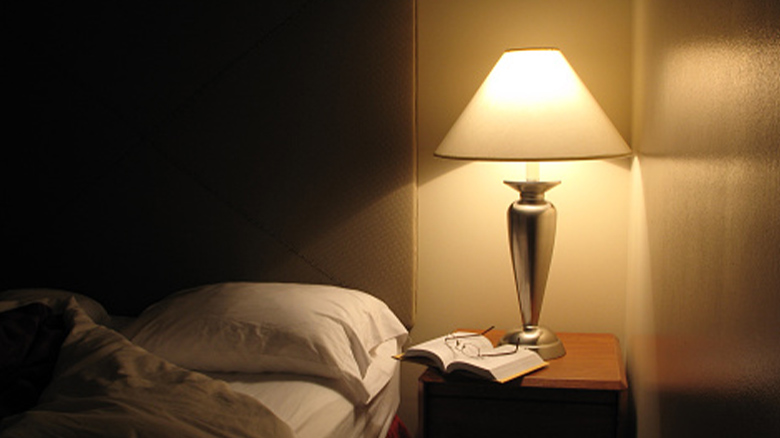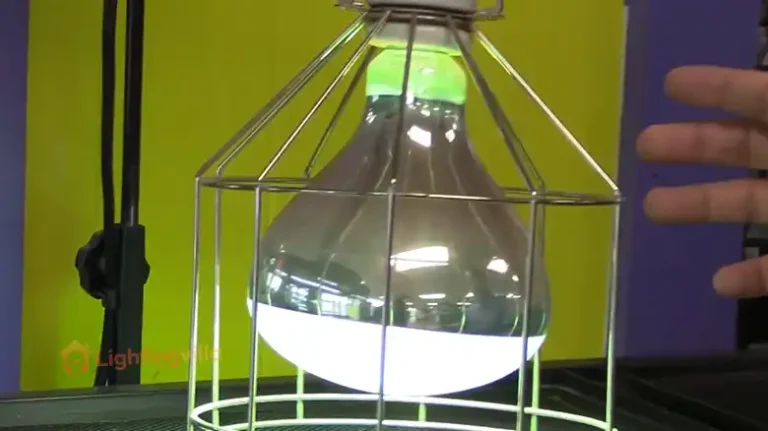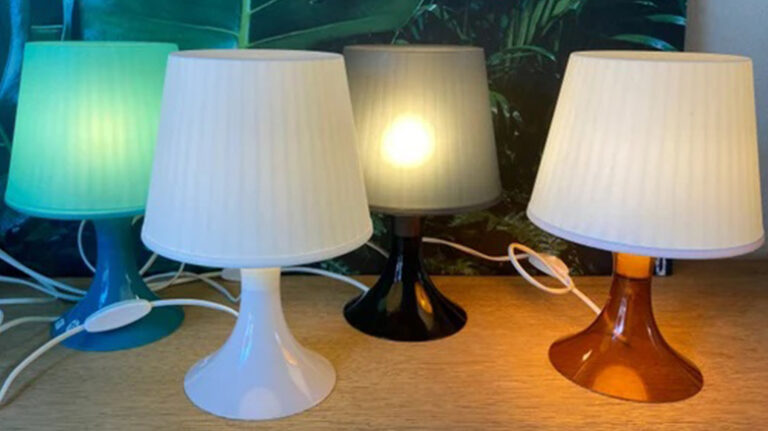Is It Safe To Leave A Lamp On For A Week? Let’s find out!
It might be simple to overlook simple activities like turning off the light at times. It’s critical that you comprehend the dangers of using your lights for lengthy periods, regardless of whether you need to do so. Are lights safe to be left on for a week then?

Low-wattage LED lights may be left on overnight without heating up excessively or catching fire. While there will be a slight increase in power use, leaving few lights on can aid security, ease of mobility, and aversion to the dark.
The touch feels cool with LED lighting. They won’t overheat, making them an excellent choice for a lamp that is on for extended periods. Make sure the environment is secure before leaving a lamp on. You should use a suitable light with no obvious cord damage.
Leaving the Lamps on for a Week, Safe or Not?
Leaving the lamps on for a week is safe. However, ensure the bulb doesn’t use more wattage than is recommended for the light fixture. Moreover, unlike conventional lighting sources, well-made LED bulbs are robust and produce little heat.
High-end LED bulbs are therefore unlikely to overheat or create a fire. If you are going to be gone for an extended amount of time, it would also be a good idea to set a timer on the light switch for safety’s sake so that the light goes on and off.
Most likely, you have heard of house fires started by lamps that were left on. Although it can be difficult to predict, factors including the quality and kind of the bulb and the surrounding temperature might affect how long a lamp can be left on until it becomes dangerous.
However, regular bulbs are more harmful because they generate more heat than LED lamps. For instance, incandescent bulbs produce 90% heat and 10% light as their energy output. Lamps usually become hotter the longer they are left on because of a lot of heat.
Life Span of Various Light Sources
Depending on the operation hours, different bulbs have varying average lifespans. The data below illustrates the operating times of various illumination sources.
750–2,000 hours for incandescent lighting (switched off when not needed).
2,000 to 4,000 hours for halogen (switched off when not needed).
Fluorescent: 24,000–36,000 hours (turned off after 20 minutes if you won’t be present).
CFL: 35,000–50,000 hours (turned off after 20 minutes if you won’t be present).
35,000–50,000 hours for LED (can be left on for a week).
Remember that CFL and fluorescent lighting are not intended to be turned on and off often. Their workdays could be cut short if they do this.
Reasons to Keep the Lights on throughout the Night
Getting rid of Nyctophobia (Fear of the dark)
People who have nyctophobia fear the dark. The illumination provided by nightlights may be calming. The lamp often provides a calming and gentle glow that illuminates a room’s complete layout without turning on the main light source.
Night lights might make people feel protected when they are about to fall asleep. They come in typical tiny square sizes and entertaining multicolored shapes and figures.
Enhanced Visibility
Pathways or staircases can be visible at night with a lamp or light. This can lessen the risk of nighttime accidents. Have you ever tripped over your toe while attempting to use the restroom in the middle of the night? What about the kids’ toys that are scattered across their bedrooms?
You may avoid obstacles by using a light to assist you in noticing them.
Security
Making sure the lights are on at night deters burglars and criminals who typically break into houses to steal valuables. A house in the dark is more exposed!
Cost Cut
Any light you leave on might raise your power cost, but only slightly. The bulbs you choose might help you keep this expenditure under control.
Low wattage and LED lights will be the best value for your money. They also have a 10-year lifespan!
LED Lamps VS Incandescent Lamps
Incandescent light bulbs were the only choice available to people in the past for lighting their houses and other buildings. According to our research, lamps still used 60-watt incandescent bulbs in 50% of light fixtures worldwide as of 2010. Because incandescents are so inexpensive to produce and buy, they are still widely used. A wire filament is heated inside of an incandescent bulb till it glows.
A transparent glass lightbulb that is either vented or filled with only an inert gas encircles this metal wire. Each incandescent bulb usually lasts around 750 and 2000 hours on average. But since the filament is so delicate, this seldom occurs, and incandescent bulbs often burn out quickly.
Because heat does not escape from filaments uniformly, certain regions become weaker over time than the rest. As a result, thinner portions of the filament experience more thermal stress and less heat dissipation. The wire is subjected to this mechanical stress until it melts or breaks. As a result, incandescent bulbs frequently burn out.
Fortunately, new lighting solutions like LEDs have been made possible by technical breakthroughs. A semiconductor is used by light-emitting diodes (LEDs) to generate light. Light is produced when electrons from a negative charge component utilize energy to cross through holes from a positively charged component. The typical lifespan of an LED bulb is between 35,000 and 50,000 hours. This is more than 17 times longer than an incandescent bulb’s lifespan!
Frequently Asked Questions
Is it safe to leave the light bulb on for a week?
Low-power LED lights may be left on all day without fear of overheating or catching fire. While this can result in a slight increase in power use, leaving some lights on can aid with nighttime apprehension, simpler navigation, and security.
Is it safe to leave a lamp on for days?
It depends on the lamp and bulb used. One easy test is to keep it on for an hour and run your fingertips over the bulb’s surface. If it isn’t too warm to the touch, it’s safe, but if it is, there may be a risk still.
What happens if you leave the light on for too long?
The internal components of overheated bulbs are likely to be damaged or melted, which might result in a fire. If the airflow is restricted, the bulbs are in enclosed fixtures, or a higher-wattage bulb is placed in a lower-wattage fixture, the danger is exacerbated.
Final Words
It’s safe to assume that LED lamps do better than their rivals in terms of longevity. Whatever shape you get them in—from Christmas to strip lights—LED lamps are best for extended use.
It is worthwhile to switch to LEDs if you have lights in your house and property that must be on all the time or for long periods. You’ll see a decrease in your energy costs in addition to lowering your carbon impact. Even if they get close, LED lamps still have certain environmental drawbacks; therefore, you should only leave them on continuously in absolutely required situations.


![[Explained] Can UV Light Cause A Fire?](https://lightingvilla.com/wp-content/uploads/2023/01/Can-Uv-Light-Cause-A-Fire-768x431.jpg)



